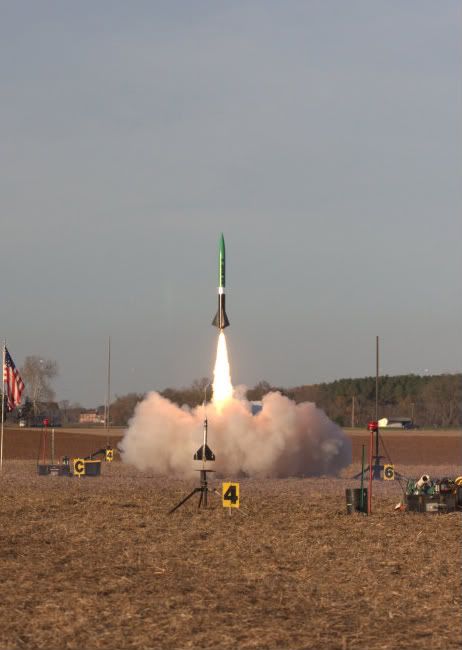- Joined
- Feb 15, 2012
- Messages
- 1,334
- Reaction score
- 142
I recently started my LOC Big Nuke 3E build. Thank you Barry from LOC Precision for allowing me to order a custom kit - he allowed me to substitute a 54mm MMT in place of the standard 75mm MMT. This shouldn't limit me in any way, as a K700W will still put this beast up well over a mile which is about as high as you want to go on our smallish Florida fields.
I'll preface this build thread with the statement "Yes, I"m building this rocket heavy". My main goal of building this rocket (besides saving the world by burning off as much of that dangerous Ammonium percolate as I can) is to use it as a test bed for a possible L3 build later in the year.
I feel I already had a pretty good handle on glassing tubes (thanks tfish and others who have helped me along!), but I'm still seriously lacking in the electronics department. I'll be using dual PerfectFlight SL100 altimeters in this build, with an av-bay topped off on both sides with some gorgeous Blast Caps.
Any TAPS or others who have any suggestions, please feel free to chime in! So, here's the pics you have all been waiting for:
1. I was very happy to see this box show up on my front door!
2. Unboxing time. At this point I didn't notice the motor tube was too long, luckily I picked up on it later in the build during a dry fit before it was epoxied in place. Always dry fit the parts!!!
3. I just wanted to see how tall this rocket was - my tallest one so far.
4. The business end of the MMT gets an Aeropack motor retainer. I sanded off the glassine and put some small nicks in the tube for the JB Weld to soak into. I applied the JB Weld up to the line of the top of the rear CR so the CR will get a good bead as I slide it into place.
5. The finished product. I usually use way too much JB Weld and end up with a huge fillet, I was a bit more conservative this time. A popsicle stick does a good job of shaping the fillet.





I'll preface this build thread with the statement "Yes, I"m building this rocket heavy". My main goal of building this rocket (besides saving the world by burning off as much of that dangerous Ammonium percolate as I can) is to use it as a test bed for a possible L3 build later in the year.
I feel I already had a pretty good handle on glassing tubes (thanks tfish and others who have helped me along!), but I'm still seriously lacking in the electronics department. I'll be using dual PerfectFlight SL100 altimeters in this build, with an av-bay topped off on both sides with some gorgeous Blast Caps.
Any TAPS or others who have any suggestions, please feel free to chime in! So, here's the pics you have all been waiting for:
1. I was very happy to see this box show up on my front door!
2. Unboxing time. At this point I didn't notice the motor tube was too long, luckily I picked up on it later in the build during a dry fit before it was epoxied in place. Always dry fit the parts!!!
3. I just wanted to see how tall this rocket was - my tallest one so far.
4. The business end of the MMT gets an Aeropack motor retainer. I sanded off the glassine and put some small nicks in the tube for the JB Weld to soak into. I applied the JB Weld up to the line of the top of the rear CR so the CR will get a good bead as I slide it into place.
5. The finished product. I usually use way too much JB Weld and end up with a huge fillet, I was a bit more conservative this time. A popsicle stick does a good job of shaping the fillet.











































